Two forces F1 and F2 are acting on a rod abc as shown in figure.

if F1=F2 then τa=τb=τc ( for both forces)
if F1=F2 then τa=τc≠τb ( for both forces)
if F1≠F2 then τa≠τb≠τc ( for both forces)
if F1≠F2 then τa=τc≠τb ( for both forces)
The correct Answer is:A, C
Step by step video, text & image solution for Two forces F_(1) " and " F_(2) are acting on a rod abc as shown in figure. by Physics experts to help you in doubts & scoring excellent marks in Class 11 exams.
Topper's Solved these Questions
- BOOK - DC PANDEYCHAPTER - ROTATIONAL MOTIONEXERCISE - Comprehension Type Questions41videos
ROTATIONAL MOTION
- BOOK - DC PANDEYCHAPTER - ROTATIONAL MOTIONEXERCISE - Matrix Matching Type Questions17videos
ROTATIONAL MOTION
- BOOK - DC PANDEYCHAPTER - ROTATIONAL MOTIONEXERCISE - A Only One Option is Correct86videos
ROTATIONAL MOTION
- BOOK - DC PANDEYCHAPTER - ROTATIONAL MECHANICSEXERCISE - Subjective Questions2videos
ROTATIONAL MECHANICS
- BOOK - DC PANDEYCHAPTER - SEMICONDUCTORS AND ELECTRONIC DEVICESEXERCISE - More than One Option is Correct3videos
SEMICONDUCTORS AND ELECTRONIC DEVICES
Similar Questions
A slab is subjected to two forces →F1and→F2 of same magnitude F as shown in the figure . Force →F2 is in XY-plane while force F1 acts along z-axis at the point (2→I+3→j) .The moment of these forces about point O will be :
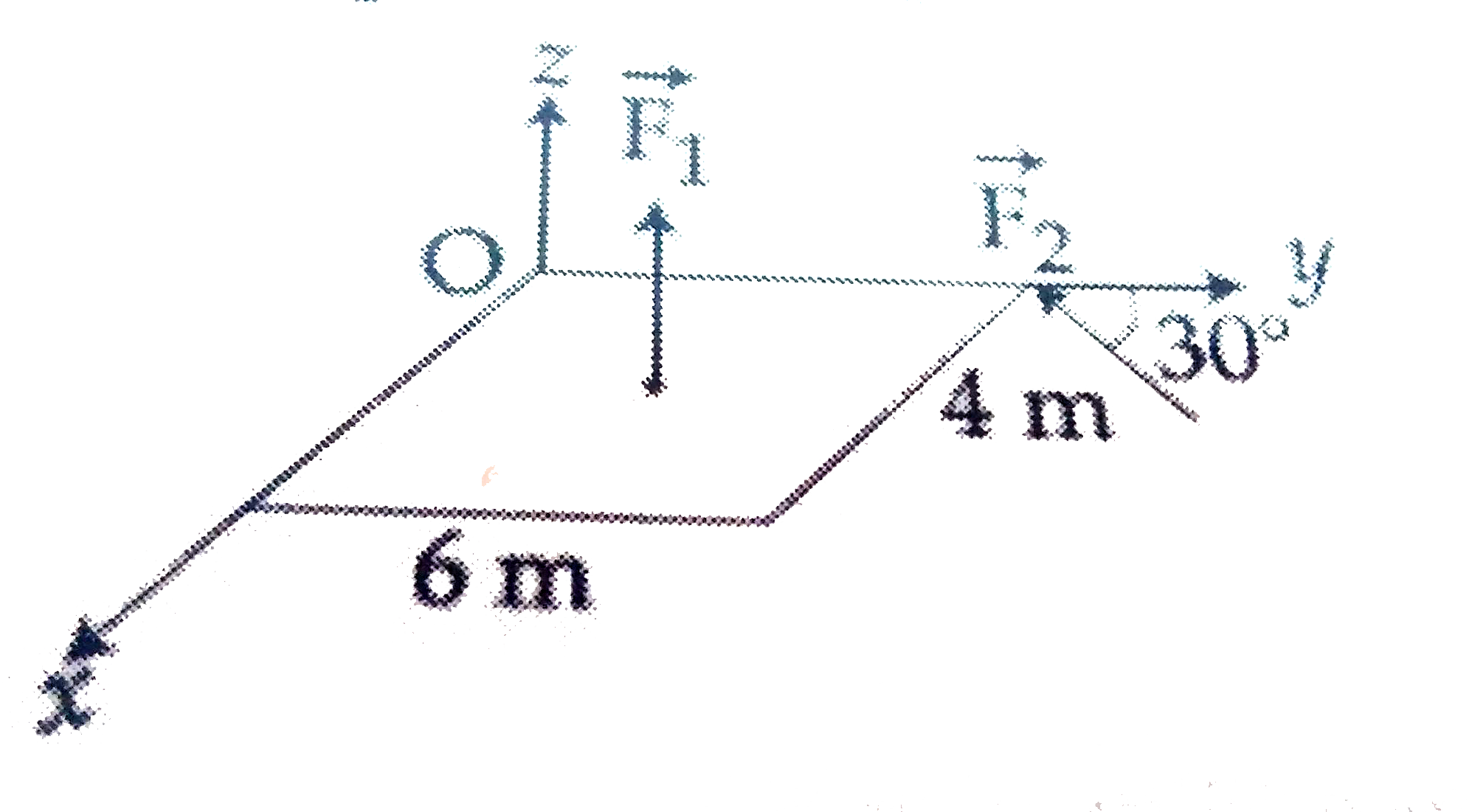 View Solution
View SolutionBlock B of mass m has been placed on block A of mass 3 m as shown. Block A rests on a smooth horizontal table. F1 is the maximum horizontal force that can be applied on the block A such that there is no slipping between the blocks. Similarly, F2 is the maximum horizontal force that can be applied on the block B so that the two blocks move together without slipping on each other. When F1andF2 both are applied together as shown in figure.
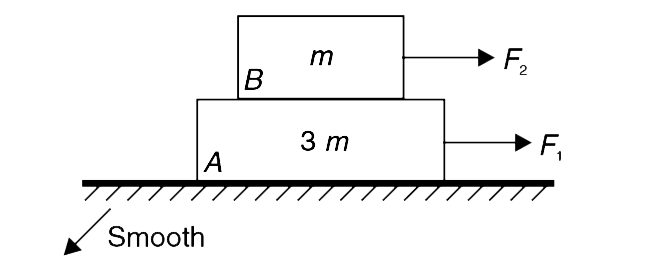
(a) Find the friction force acting between the blocks.
(b) Acceleration of the two blocks.
(c) If F2 is decreased a little, what will be direction of friction acting on B.View Solution
Knowledge Check
- Question 1 - Select One
Let us consider two forces F1 and F2 acting on a body of mass 2 kg as shown in the figure. F1=10N, F2=2N , what will be the acceleration?
 A4B1C2D3
A4B1C2D3 - Question 2 - Select One
Determine the point of application of force, when forces of 20N and 30N are acting on rod as shown in figure.
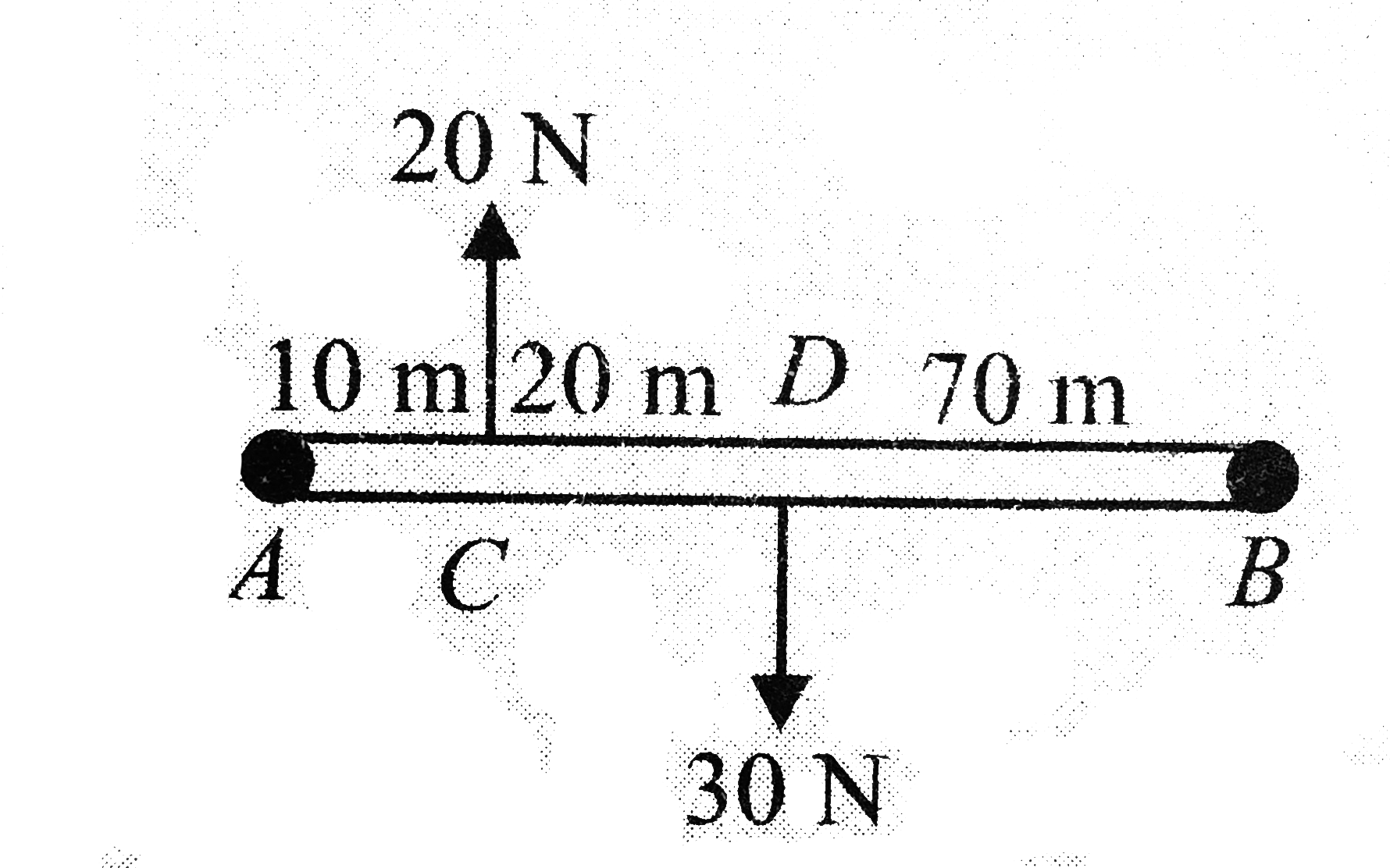 A70 mB80 mC60 mD50 m
A70 mB80 mC60 mD50 m - Question 3 - Select One
Two force F1 and F2 are acting on a body. One force is double that of the other force and the resultant is equal to the greater force. Then the angle between the two forces is :-
Acos−1(1/2)Bcos−1(−1/2)Ccos−1(−1/4)Dcos−1(1/4)
Two forces F1 and F2 are acting on a body. One force is double that of the other force and the resultant is equal to the greater force. Then the angle between the two forces is
View SolutionTwo forces of mangitude F1 and F2 are acting on an object.The magnitude of the net force Fnet on the object will be in the range.
View SolutionWhen a force F acts on a body of mass m, the acceleration produced in the body is a. If three equal forces F1=F2=F3=F act on the same body as shown in figure the acceleration produced is
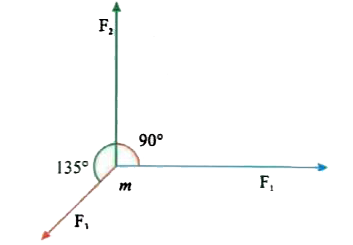 View Solution
View SolutionInitially both blocks are at rest on a horizontal surface and string is just tight. At t=0, two constant horizontal force F1 and F2 start acting on blocks as shown. f1 and f2 are frication foces acting on 10kg and 20kg block (co-efficient of frication between and ground are 0.5). Values of F1 and F2 are given column-I. Then match magnitudes of f1,f2 and direction of →f1 with corresponding values of F1 and F2 given in column-I
[g=10m/s2].
 View Solution
View SolutionA block is kept at rest on a rought ground as shown. Two force F1and F2 are acting on it. If we increased either of the two force F1and F2, force of friction acting on the block will increase.
By increasing F1, normal reaction from ground will increase.
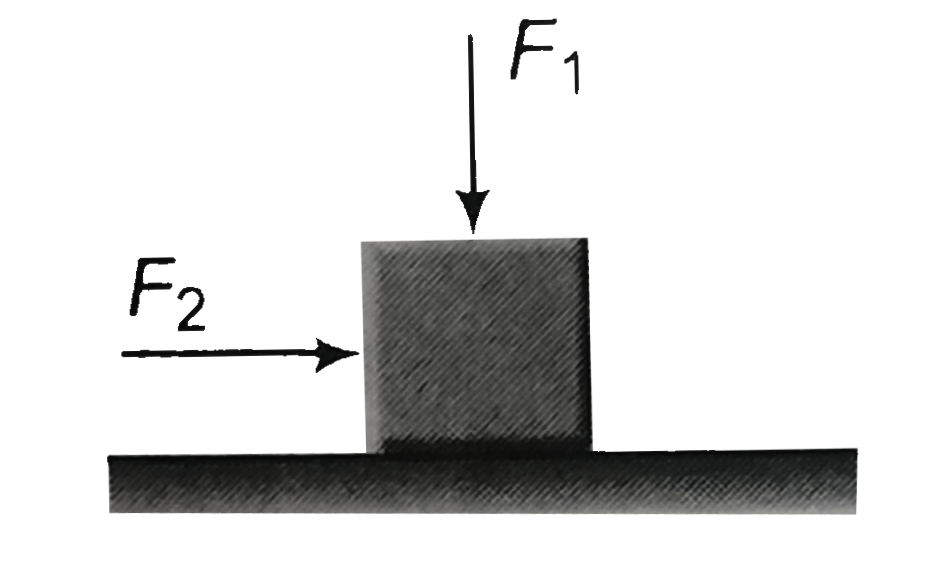 View Solution
View Solution

